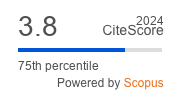Commentary | Open Access
Palimpsest Metaphor: Figures and Spaces of the Contemporary Project
| Views: | 3684 | | | Downloads: | 2229 |
Abstract: What are the consequences of the use of the palimpsest metaphor on the construction of the contemporary project? The metaphor casts criticism on the modern project and opens to the long-term (longue durée). The investigation of territorial rationalities brings to the fore these temporal dimensions and the organizational structures of space. Understanding territorial rationalities is inescapable to define the basis of any exploration of the future of territorial, urban-rural configurations. The metaphor of the palimpsest alludes to the meeting/clash between different times, endless modifications and transformations. Until the use of the support is not so serious as to question its very existence, directions, dynamics and, at times, fortuitous encounters interweave on its shriveled skin; forms of power and violence are measured there, which, in turn, will generate new conflicts. “Unintentional monuments” are places where this intensity of pure overlapping disconnected intentions become monumental and the substance of a project, revealing, celebrating and exposing their landscapes, as episodes of collective human and environmental history. The palimpsest as a figure in the contemporary project is not only a criticism of the modern space, but the expression of a change of direction in the design activity, of its social role and of the theories intended to support it: Design space in the second degree.
Keywords: contemporary project; landscape design; longue durée; palimpsest; territorial rationality; urban and territorial design
Published:
© Paola Viganò. This is an open access article distributed under the terms of the Creative Commons Attribution 4.0 license (http://creativecommons.org/licenses/by/4.0), which permits any use, distribution, and reproduction of the work without further permission provided the original author(s) and source are credited.


